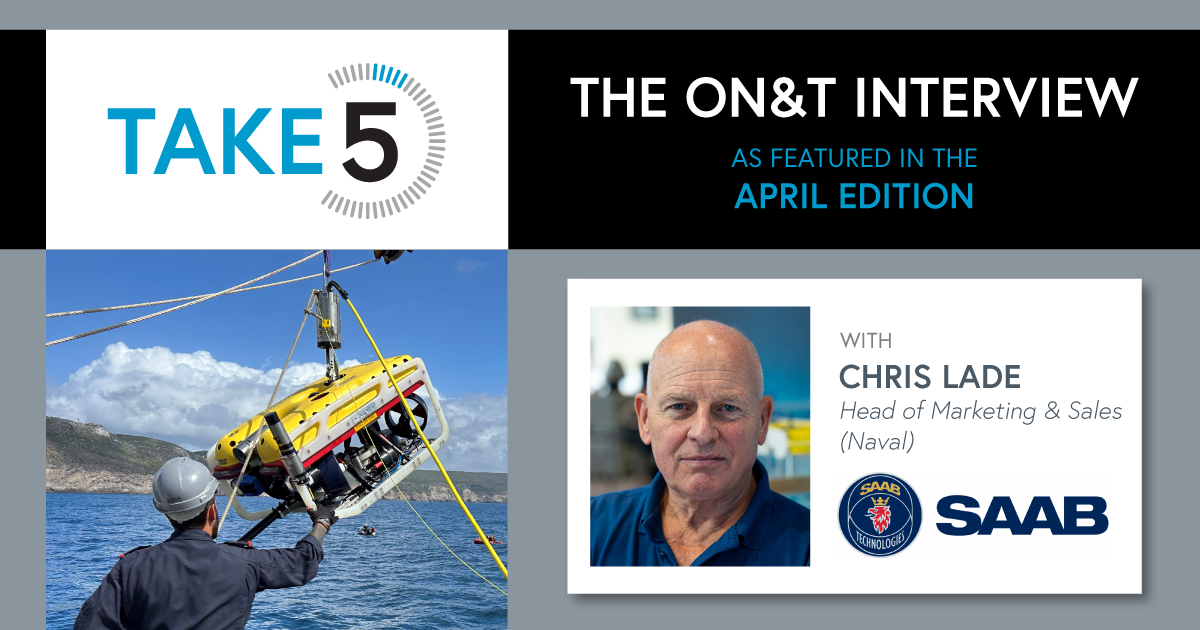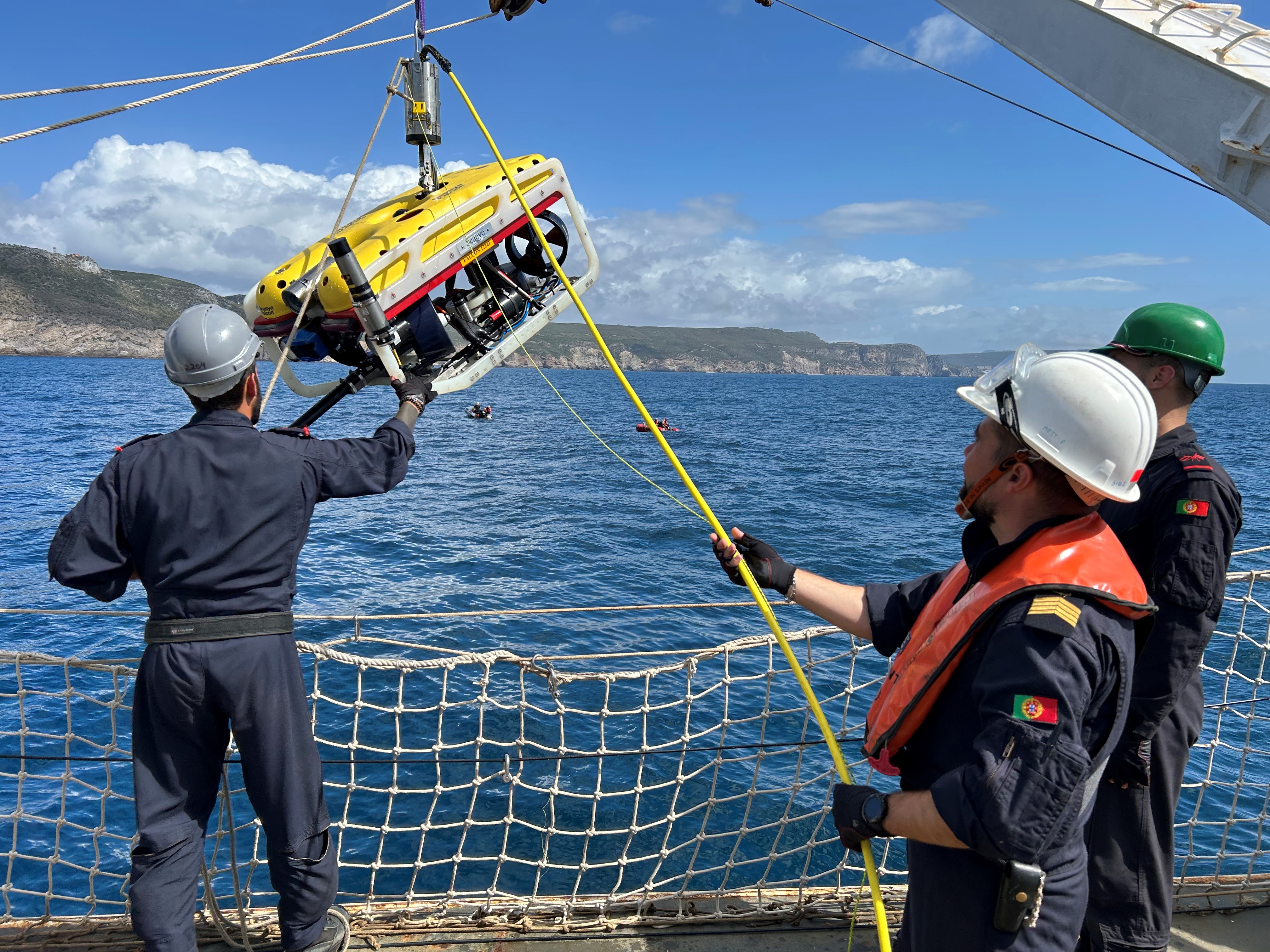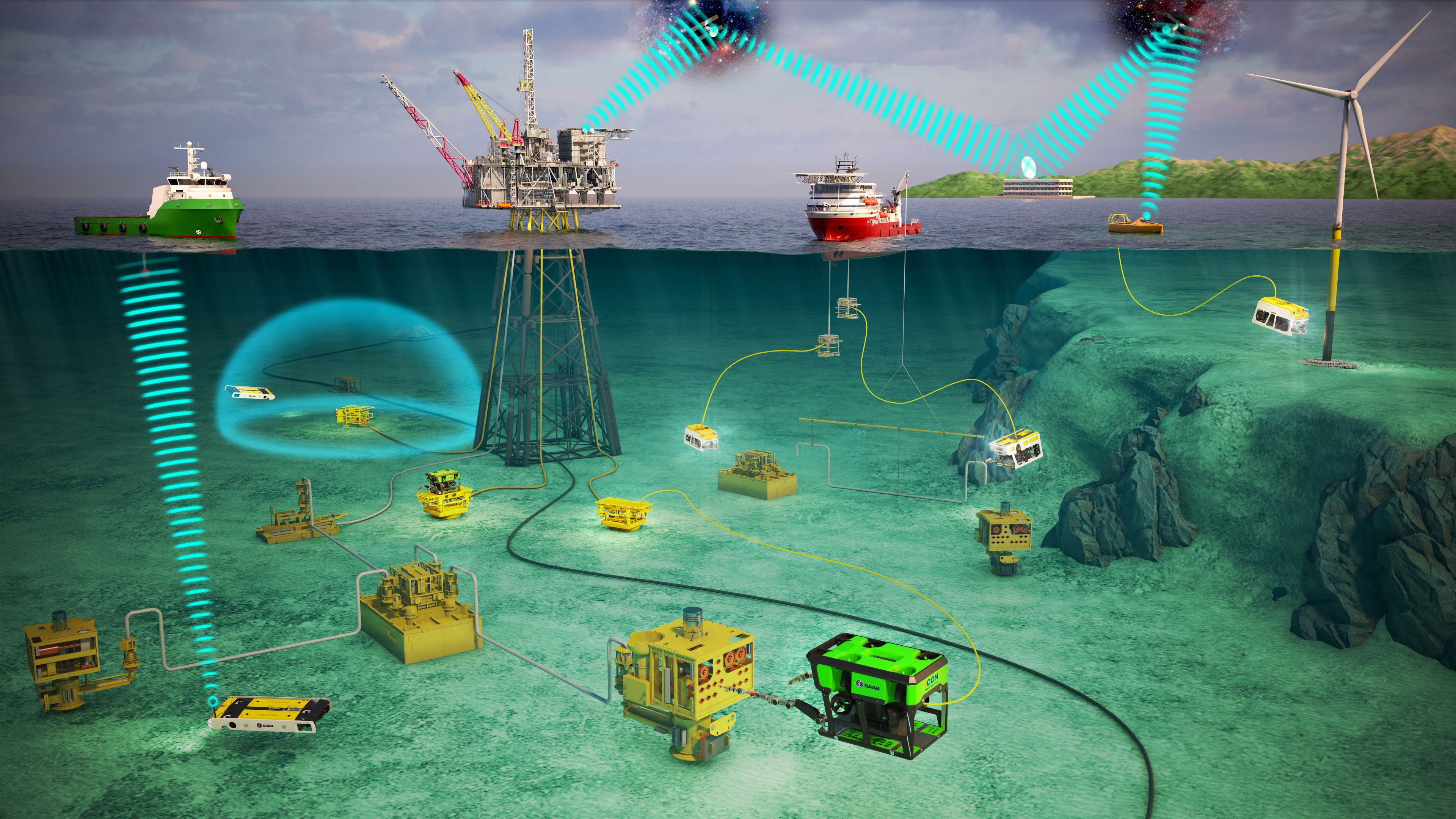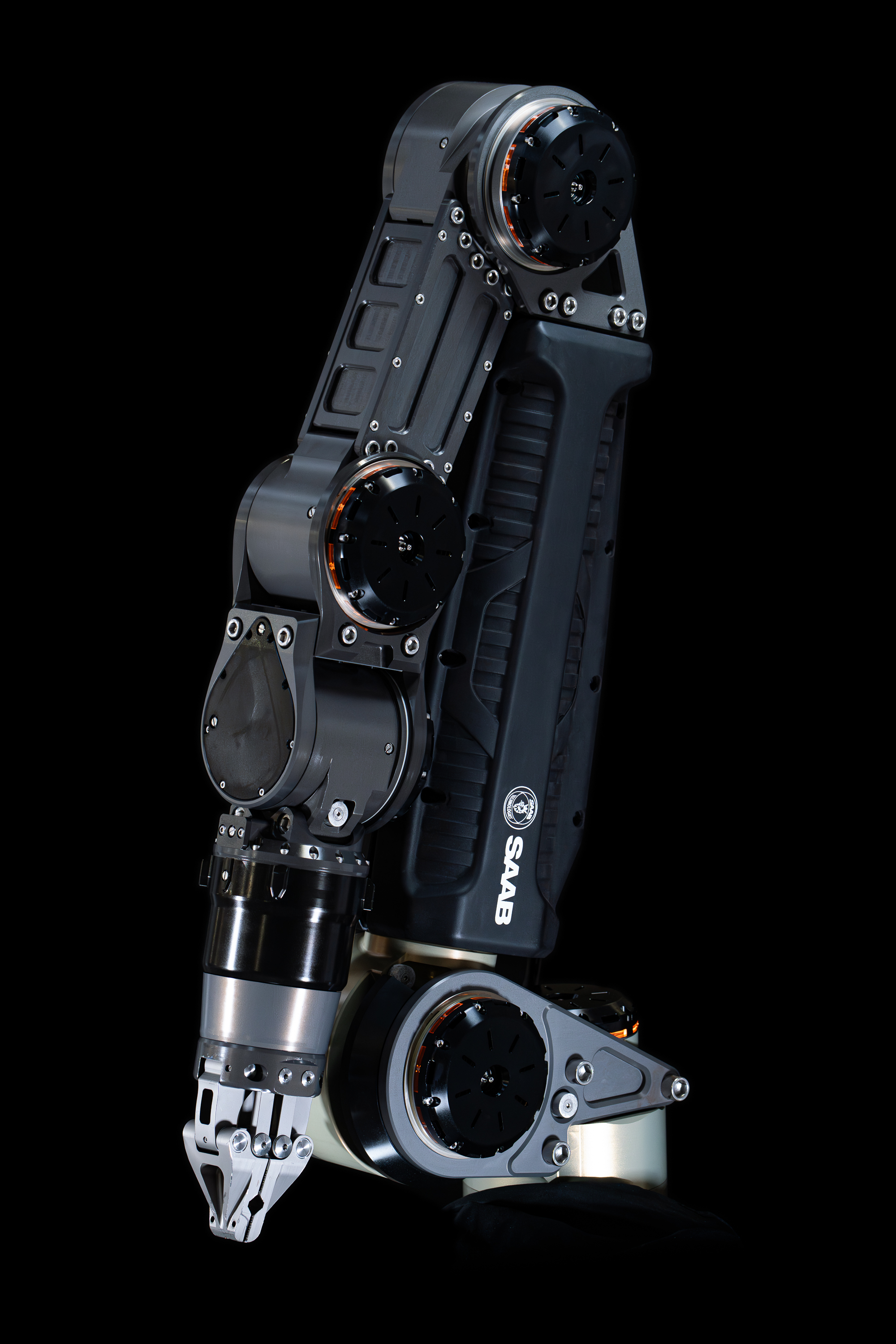
Should you be interested in participating in a future TAKE 5 interview, please get in touch at editor@oceannews.com.


With ROV design, development, and deployment the editorial focus of this month’s ON&T, we sat down for an exclusive chat with Chris Lade, Head of Marketing & Sales (Naval) at Saab UK, to get the latest insights into one of the leading manufacturers of electric underwater robotics.
1. What are the foremost in-field requirements driving ROV R&D priorities at Saab?
Saab is at the forefront of developing new technologies and concepts of operation that will substantially reduce emissions, health and safety exposure and cost, whilst improving service.
Our latest solutions, such as the Seaeye eWROV, the all-electric work class robot, can be controlled from the comfort and safety of an onshore office—or any location with a computer and an internet connection. The ROV has been designed to be deployed from unmanned surface vessels and can even be resident on the seabed requiring no ship or platform at all. The new Seaeye systems are more cost effective, safer, and create substantially less emissions compared to traditional solutions.

Seaeye Falcon participating in the NATO REPMUS exercise in September 2023. (Credit: Saab UK)
2. What is the capacity of Saab residency vehicles for sustained missions?
The key capability that ROV residency delivers is persistence, allowing the ROV to remain submerged for extended periods. From a commercial perspective this brings with it the additional benefit of operating cost reductions, as less support vessel time is required. These systems are not so much speculation as they are very real and in operation today, for example, Saab’s Sabertooths are currently being used on commercial contracts in a resident configuration.
Specific requirements for ROVs to succeed in alternative modes of operation, such as seabed residency, are being designed into various Saab underwater systems from the outset. This includes the eWROV, with higher levels of pre-requisite reliability and increased automation and autonomy. This is backed up by a number of demonstrations and qualification programs that have been carried out to prove key aspects of the resident systems.

Saab's underwater ecosystem. (Credit: Saab UK)
Ensuring extended ROV operations requires adequate support infrastructure, primarily in two key areas. First is power. ROVs need sufficient power to function, which can come from batteries, tethers, or various power generators like wave, tidal or fuel cells. Saab has even conducted trials with wave generators and fuel cell technology to explore alternative power sources. Second is communication. Since ROVs do not possess full autonomy, near-real-time communication is critical. Establishing communication with the vehicle during operations requires reliable systems. This can be done through cables, though their use may be limited in certain operations.
Communication between the ROV/autonomous underwater vehicles (AUVs) is vital. ROVs, with tethers, have easier communication setups compared to AUVs. For AUVs, establishing an underwater network of multiple acoustic nodes and free space optics are all possible through Saab’s underwater systems ecosystem.
3. Tell us about the latest addition to Saab’s underwater portfolio…
The latest addition to Saab’s underwater portfolio, is the eWROV. It is a full-sized Class III B ROV system. But it’s electric rather than hydraulic per the majority of systems currently in use. Electrification is the key to improved performance, and the eWROV takes electric underwater vehicle capabilities to the next level.
The goal of carbon neutrality is a growing focus among the global community, and the eWROV has been designed with eco-responsibility in mind. When comparing electric thrusters with hydraulic thrusters, electric is 48% more efficient. The eWROV offers comparable or higher levels of thrust and superior efficiency compared to hydraulic systems, crucial for demanding underwater tasks. This coupled with increased reliability and options to operate from shore result in not only being more capable, but also more environmentally friendly and safer to operate.

Seaeye eM1-7 electric manipulator (Credit: Saab UK)
To fully realize the environmental and efficiency benefits of electric ROVs, Saab UK has developed the Seaeye eM1-7 electric manipulator, the world’s most advanced electric manipulator yet. The eM1-7 manipulator features an advanced control system allowing both manual and automated operation. Highly accurate, modular electric joints enable enhanced arm control, path planning solutions and actuator re-use. It also has an impressive lift capacity and range of motion, exceeding its hydraulic equivalents, while its aluminum construction ensures high reliability.
4. How is Saab working with the defense sector to integrate ROVs into tactical operations?
Critical Undersea Infrastructure Warfare (CUIW) is an essential aspect of our involvement in underwater operations. With our world becoming more connected and tensions rising, safeguarding these assets has become critical. It's essential for everyone—government agencies and industry to team up and find new ways to keep our undersea infrastructure safe. This can be done through partnerships with the commercial industry.
A prime example of this is the NATO REPMUS and DYNAMIC MESSENGER exercises that happened in September 2023, hosted by the Portuguese Navy, that Saab participated in. The exercises involved over 2,000 personnel from 16 NATO nations and Ireland. They focused on the integration of new maritime technologies into NATO operations and the ability of uncrewed underwater vehicles to operate together in a range of scenarios including CUIW.
During the exercises, Saab deployed and operated the AUV62-AT anti-submarine warfare training target and the Seaeye Falcon. Sponsored by the Royal Navy the Falcon was used primarily to showcase its versatility by aiding in tasks such as identifying and neutralizing simulated Underwater Explosive Devices. The AUV62-AT, in collaboration with Sweden's defense procurement agency, supported Anti-Submarine Warfare (ASW) systems by mimicking the acoustic profile of submarines. This then fed-back valuable data about how the ASW battle had been conducted. Saab’s participation in these events was to help enhance underwater capabilities, as well as strengthen international security efforts.
5. What does the future of ROVs look like for Saab?
The future will see significant growth in onshore controlled remote operations. This will be with vehicles deployed from subsea docking stations, or lightly manned, or unmanned vessels, where reliability and reduced maintenance will require all-electric robots for long-term deployment underwater.
Another key area of advancement is further convergence of AUV/ROVs with greater levels of autonomy. By enabling subsea robots to make decisions independently during missions, challenges associated with high latency, low bandwidth over the horizon communication links, will be minimized.
Looking ahead, Saab’s Underwater Systems is gearing up for even deeper dives beyond the industry standard 3,000 m. Operations like CUIW demand ROVs that can plunge down to 6,000 m and have the ability to carry various payloads that will evolve with
For more information visit: https://www.saabseaeye.com/
This story was originally featured in ON&T Magazine’s April 2024 issue. Click here to read more.

Ocean News & Technology
is a publication of TSC Strategic
8502 SW Kansas Ave
Stuart, FL 34997
info@tscpublishing.com